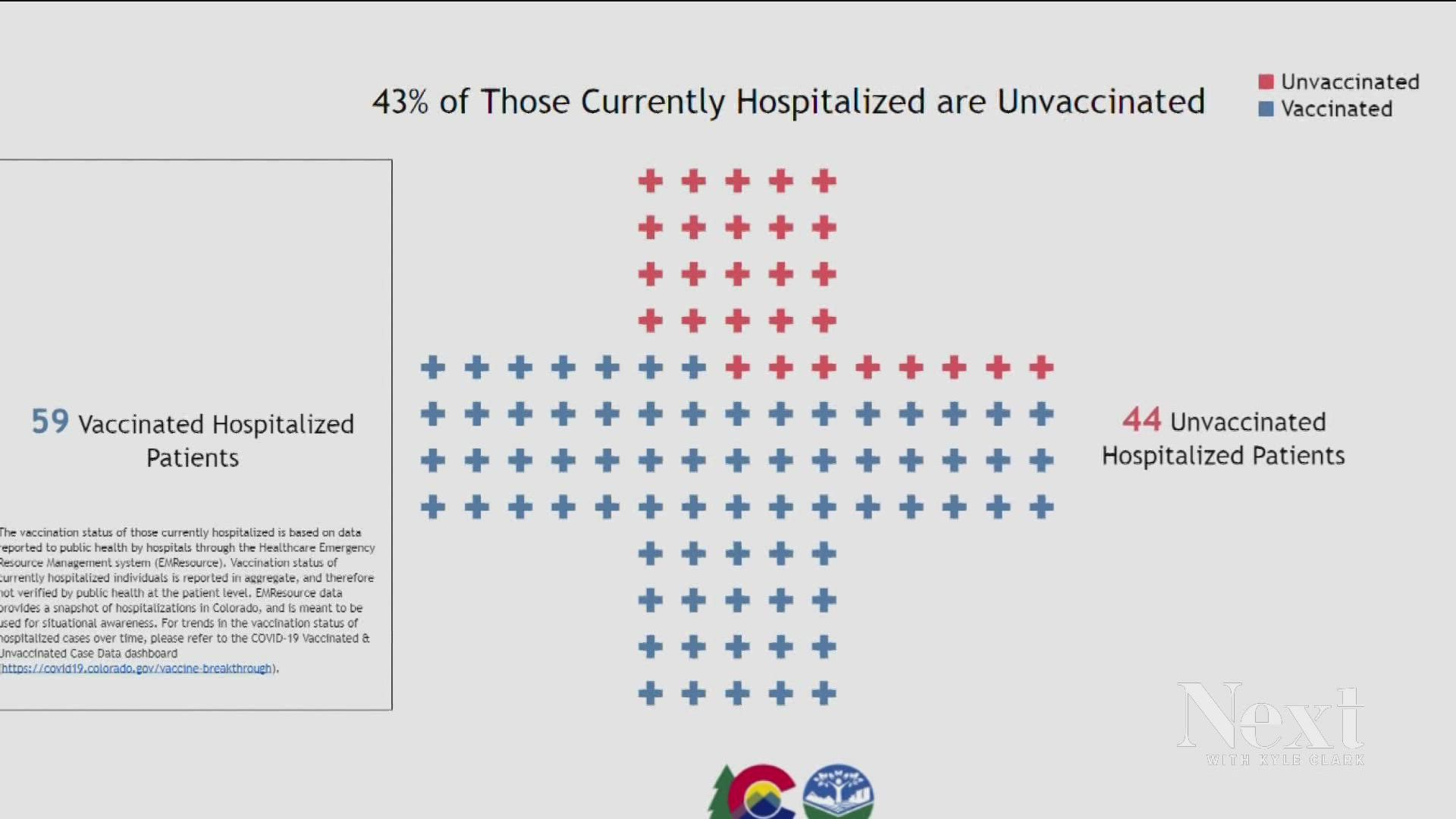DENVER — The number of vaccinated versus unvaccinated patients in Colorado hospitals is changing. But before drawing any conclusions, the data needs context.
Wednesday, the COVID data dashboard published by the Colorado Department of Public Health and Environment (CDPHE) showed 42 vaccinated hospitalized patients and 46 unvaccinated patients -- a near even split.
Thursday, the vaccinated outnumbered the other side with 59 patients compared to 44 unvaccinated patients.
For clarity, we spoke with Dr. Jon Samet with the Colorado School of Public Health, Dr. Reggie Washington, the chief medical officer with Presbyterian St. Luke's Medical Center, and CDPHE.
There are a few reasons these experts aren't surprised by the numbers.
"It's what we would expect, particularly with [the omicron COVID variant], many people who were unvaccinated became infected and now have natural acquired immunity," Samet said. "So, the pool of people unvaccinated is now increasingly immune because the omicron infection or delta [variant] before that. We see that change in proportion and would expect that."
CDPHE elaborated on that via email, saying that vaccine rates alone won't reflect other factors, especially when case counts are comparatively low.
"First, nearly 80% of Colorado's adult population and nearly 90% of the 65+ population is fully vaccinated. The "even split" is coming from very different sized populations. Additionally, older individuals are more likely to be vaccinated but are also more likely to be hospitalized.
At times of very low case counts, it is not unusual to see things like this 'even split,' or even potentially times when there may be more vaccinated people hospitalized than unvaccinated people."
All of that considered, by looking at sheer numbers, there can be more vaccinated patients because the vaccinated population is simply a much bigger group of people than those without the vaccine. When you break it down by age, a more apples-to-apple comparison, people without their shots end up in the hospital at a higher rate, CDPHE said.
CDPHE also noted that some people may be hospitalized for a reason other than COVID-19, and they find out after getting there.
Patients might also be immunocompromised.
"You have to look at who is in the hospital beyond vaccinations," Washington said. "Are they elderly, do they have diabetes, kidney disease, immunosuppressed?"
In more detail CDPHE wrote:
"We do track that information using a different data source, however. The analysis takes into account the patient's age, which is a key factor in looking at who is more frequently hospitalized and who is vaccinated … For the week of April 3, the rate of hospitalization among unvaccinated people is 2.6 compared with 0.6 for people who are vaccinated and have received a booster, or 4 times higher. The methods used in this analysis is a more accurate way to differentiate risk of COVID-19 hospitalization among vaccinated versus unvaccinated people."
What's still being research in both scenarios, with vaccinations and natural immunity, is how long that protection lasts.
"We don't know how long natural immunity lasts," Washington said. "Preliminary data is very clear that receiving a vaccine gives you a higher level of immunity than the natural infection."

